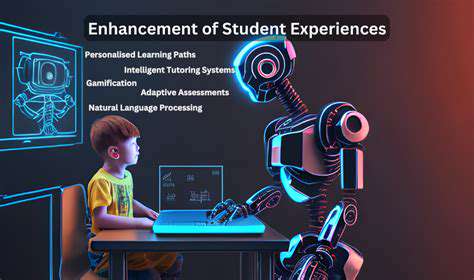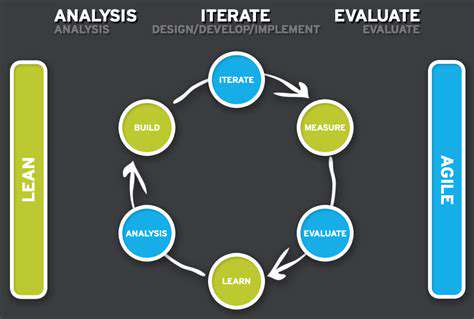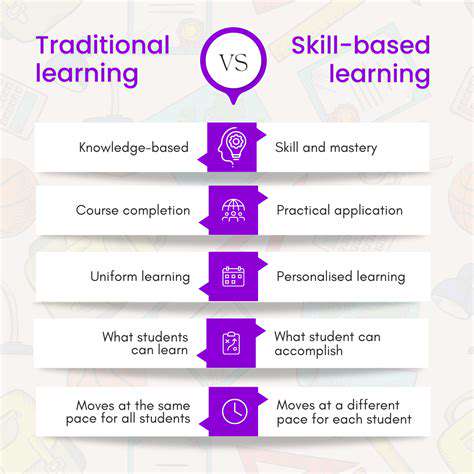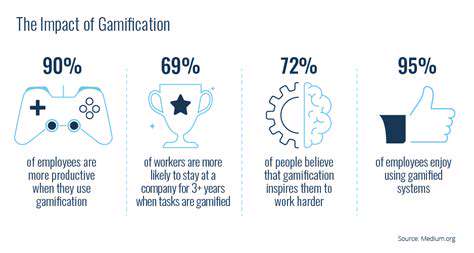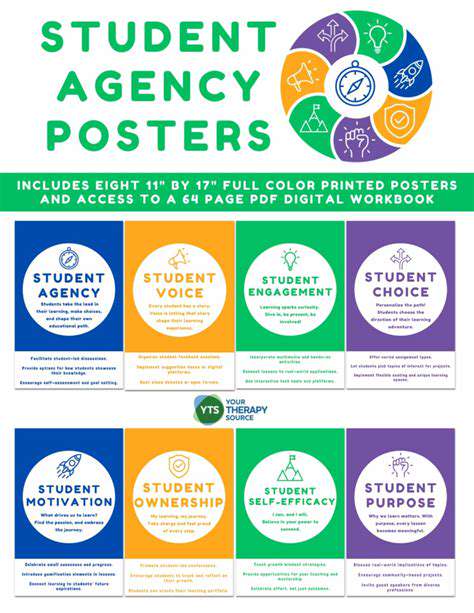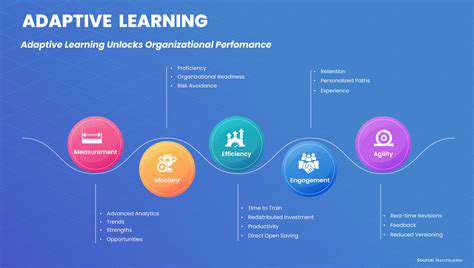From Simulated Surgeries to Virtual Factories: Immersive Training
Virtual Reality (VR) training is rapidly transforming various industries, from healthcare to manufacturing. Immersive VR environments allow trainees to practice complex procedures and scenarios in a safe, controlled setting, significantly enhancing their skills and knowledge retention. This technology replicates real-world situations with incredible fidelity, allowing for repeated practice without the risks associated with real-world applications. This is particularly valuable in fields where mistakes can have serious consequences.
The ability to immerse trainees in realistic environments fosters a deeper understanding of the material. VR environments can be tailored to specific needs and learning styles, creating a personalized and engaging training experience that goes beyond traditional methods.
Augmented Reality for Skill Development
Augmented Reality (AR) is another powerful tool in the immersive training arsenal. AR overlays digital information onto the real world, providing trainees with real-time guidance and feedback. Imagine a surgeon using AR glasses to see anatomical overlays during a procedure, or a technician using AR to receive step-by-step instructions for complex machinery assembly. This combination of real-world context and digital information makes AR particularly effective for practical skills development.
Simulations: Realistic Practice in a Controlled Environment
Simulations are a cornerstone of immersive training, offering a safe space for trainees to practice procedures and scenarios. From simulated surgeries and flight operations to disaster response drills and manufacturing processes, simulations allow for repeated practice without the risks associated with real-world applications. This repeated exposure to complex situations builds confidence and muscle memory in a controlled environment, fostering proficiency.
The ability to analyze performance and receive immediate feedback during simulations is a huge advantage. This allows trainers to identify areas for improvement and tailor future training based on individual needs and performance.
Personalized Learning Paths: Tailoring Training to Individual Needs
Immersive training technologies enable the creation of personalized learning paths. By tracking individual progress and performance, these technologies can adapt to each trainee's specific needs and learning style. This personalized approach fosters a more engaged and effective learning experience, leading to higher skill attainment and retention.
Cost-Effectiveness and Efficiency: A Return on Investment
One of the key advantages of immersive training technologies is their potential for cost-effectiveness and efficiency. By reducing the need for expensive equipment, real-world resources, and extensive travel, these technologies can significantly lower the overall cost of training programs. The ability to repeat training modules and analyze performance data also improves the efficiency of the training process.
The Future of Training: Beyond the Classroom
Immersive training technologies are poised to revolutionize how we learn and develop skills. The ability to create realistic, engaging, and personalized learning experiences promises to increase efficiency, reduce costs, and improve skill retention in various industries. As the technology evolves, we can expect even more sophisticated and accessible solutions for training, moving beyond the traditional classroom setting and into the virtual world.
Simulated Surgeries: A New Era in Medical Training
Immersive Training Environments
Simulated surgeries are revolutionizing medical training, moving beyond the limitations of traditional hands-on practice. Immersive virtual reality environments provide realistic anatomical models, allowing trainees to practice complex procedures in a safe and controlled setting. These environments enable repeated practice of delicate surgical maneuvers and critical decision-making, fostering confidence and proficiency without the risks associated with live patients.
The ability to manipulate virtual instruments and visualize internal structures in three dimensions is crucial. This level of detail and interactivity allows trainees to gain a deep understanding of anatomical relationships and surgical techniques, enhancing their comprehension and skill development. These virtual environments are constantly being refined, incorporating detailed feedback mechanisms to provide trainees with immediate assessment and guidance.
Realistic Surgical Scenarios
Beyond anatomical accuracy, simulated surgeries excel in creating realistic surgical scenarios. These scenarios often include unexpected complications, patient variations, and real-time challenges that mirror the complexities of a live operating room. Trainees can encounter these challenges without the inherent risks or emotional pressures of actual surgeries, allowing them to practice problem-solving under simulated pressure.
By confronting a range of possible outcomes and managing them within the simulated environment, trainees develop critical thinking and decision-making skills that are invaluable in real-world situations. This approach to training is more efficient and effective than traditional methods, allowing medical professionals to hone their skills in a controlled, repeatable manner.
Data-Driven Feedback and Analysis
Sophisticated software embedded within these simulated environments allows for comprehensive data collection and analysis. Trainees' performance metrics, such as incision accuracy, instrument handling, and decision-making processes, are meticulously tracked and recorded. This data-driven feedback provides invaluable insights into areas for improvement, allowing for personalized learning plans and targeted skill development.
The ability to review and analyze these metrics allows trainees to identify their strengths and weaknesses in a non-judgmental environment. This fosters a culture of continuous improvement, allowing trainees to refine their techniques and master complex surgical procedures. The data analysis aspect also enables educators to monitor the progress of trainees and adapt their training programs accordingly.
Future Implications and Applications
The future of medical training looks promising with the continued development of simulated surgeries. Beyond surgical training, these technologies hold immense potential for various medical specialties, including cardiology, oncology, and even general practice. The ability to practice complex procedures in a risk-free environment will empower medical professionals to develop expertise and proficiency before interacting with real patients.
This approach to training can significantly reduce the learning curve for new medical professionals and enhance the overall quality of patient care. Further advancements in technology and software integration will likely lead to even more sophisticated and realistic training scenarios, ultimately leading to a new era of enhanced medical expertise and patient safety.

The Future of Immersive Training: Integration and Innovation
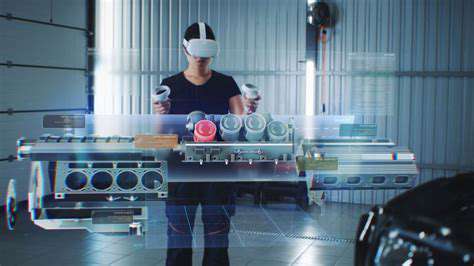
Augmented Reality Training: Bridging the Gap Between Theory and Practice
Augmented reality (AR) is rapidly transforming the landscape of immersive training, offering a compelling blend of digital overlays and real-world environments. This technology allows trainees to interact with interactive 3D models and simulations within their existing surroundings, making learning more engaging and practical. AR training is particularly effective in fields like medicine, engineering, and manufacturing, where hands-on experience is crucial. Imagine a surgeon practicing complex procedures in a virtual operating room, or an engineer troubleshooting machinery in a simulated factory setting. AR training fosters a deeper understanding of complex concepts by providing a tangible and interactive learning experience.
One of the key advantages of AR training is its ability to create personalized learning experiences. Adaptive algorithms can adjust the difficulty and complexity of the training modules based on the individual trainee's progress and performance. This personalized approach ensures that each learner receives the specific support they need to succeed. By tailoring the training to individual needs, AR fosters a more effective and efficient learning process. Furthermore, AR training can be accessed anytime, anywhere, eliminating the need for expensive and time-consuming physical training facilities.
Virtual Reality Training: Experiencing the Unthinkable
Virtual reality (VR) training takes immersive learning to a whole new level, creating entirely simulated environments for training scenarios. Trainees can step into the shoes of a pilot, a firefighter, or a soldier, experiencing realistic and potentially dangerous situations without any real-world risks. This type of simulated environment enables trainees to practice crucial skills in a safe and controlled environment, significantly improving their proficiency and confidence. This technology is particularly effective in high-risk industries where the cost of mistakes can be extremely high.
Gamification and Interactive Learning in Immersive Training
The integration of gamification techniques into immersive training enhances engagement and motivation. Points, badges, leaderboards, and other interactive elements can make the learning process more enjoyable and competitive. This approach fosters a sense of accomplishment and encourages active participation. Gamified training can be highly effective in retaining knowledge and improving performance. It turns what could be a dry learning experience into something exciting and motivating, keeping the learner fully invested in the process.
Interactive elements also improve the effectiveness of immersive training. By allowing trainees to manipulate virtual objects, solve problems, and make decisions within a simulated environment, immersive training provides a unique opportunity to develop real-world skills. This hands-on approach ensures that the knowledge and skills learned are retained and implemented effectively. This approach also helps trainees develop critical thinking and problem-solving skills in a safe and controlled environment.
The Future of Immersive Training: Beyond the Current Horizons
The future of immersive training extends beyond the current technologies, promising even more advanced and personalized learning experiences. The convergence of artificial intelligence (AI) with immersive technologies will enable the creation of dynamic and adaptive training environments, further enhancing the effectiveness and efficiency of learning. Imagine training environments that can instantaneously adjust to the trainee's performance, providing customized feedback and support in real-time. This level of personalization will revolutionize the way we approach training, improving outcomes and knowledge retention significantly.
Furthermore, advancements in haptic technology will enhance the realism of immersive training by providing tactile feedback. This will allow trainees to experience a more complete and comprehensive understanding of the environment and objects they are interacting with, leading to a more immersive and engaging experience. This will be particularly beneficial in fields like surgery, engineering, and manufacturing, where tactile feedback is essential for skill development.

